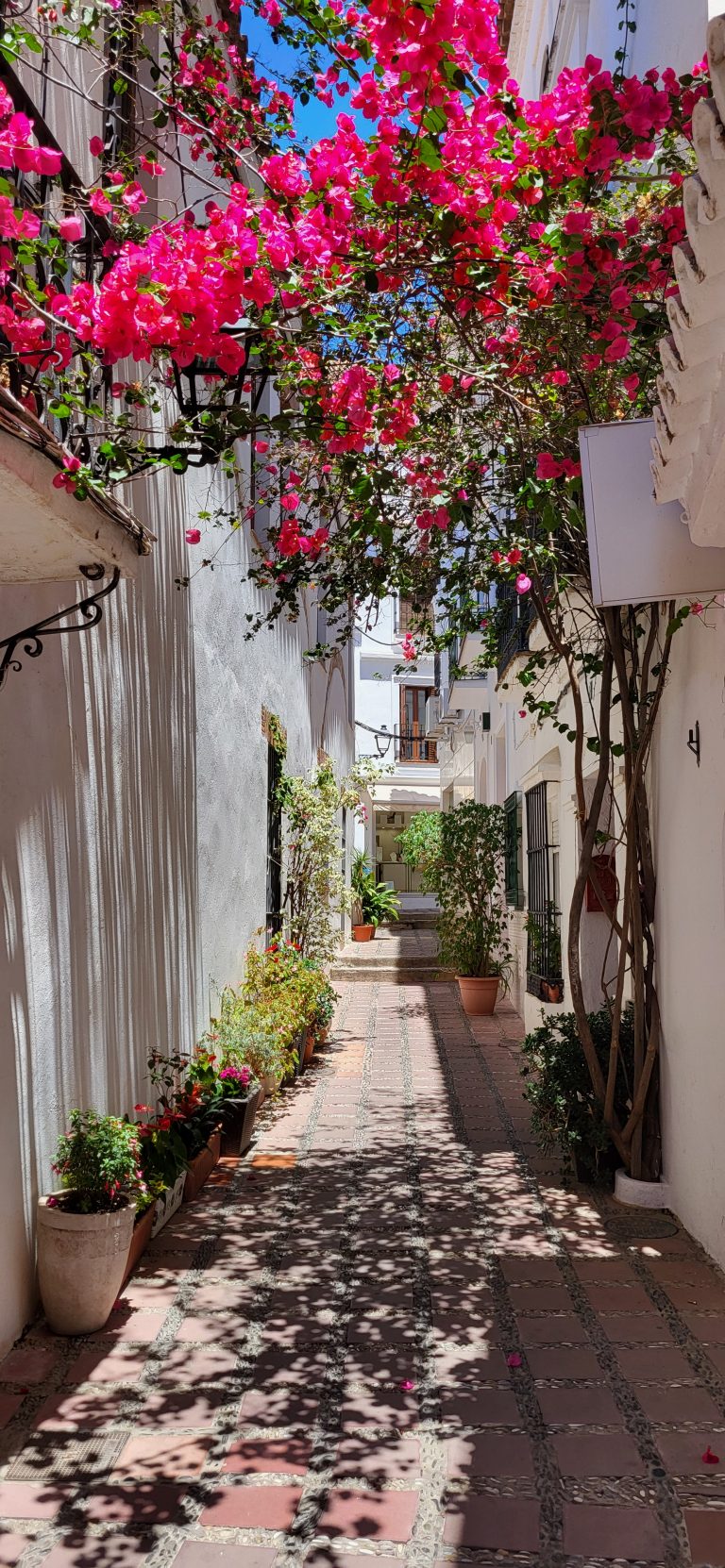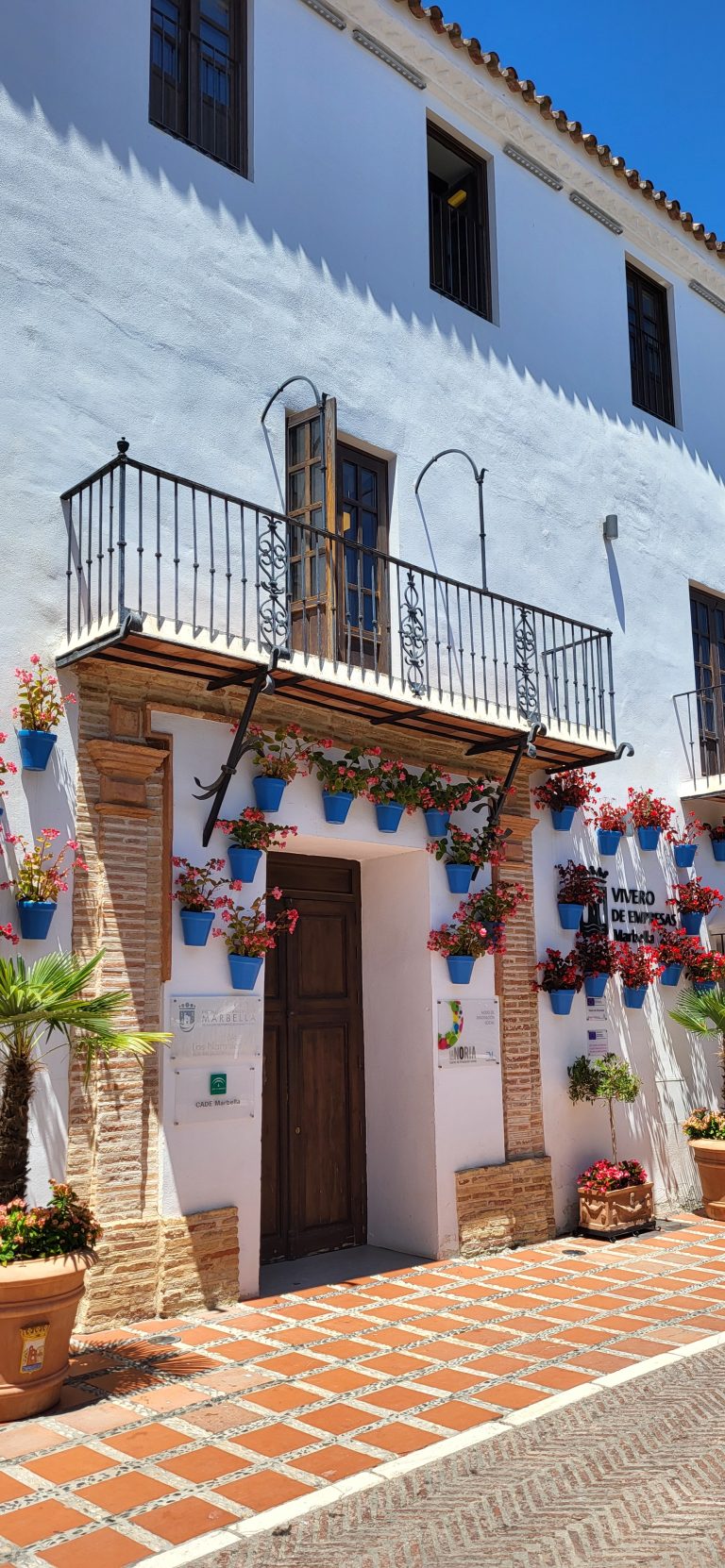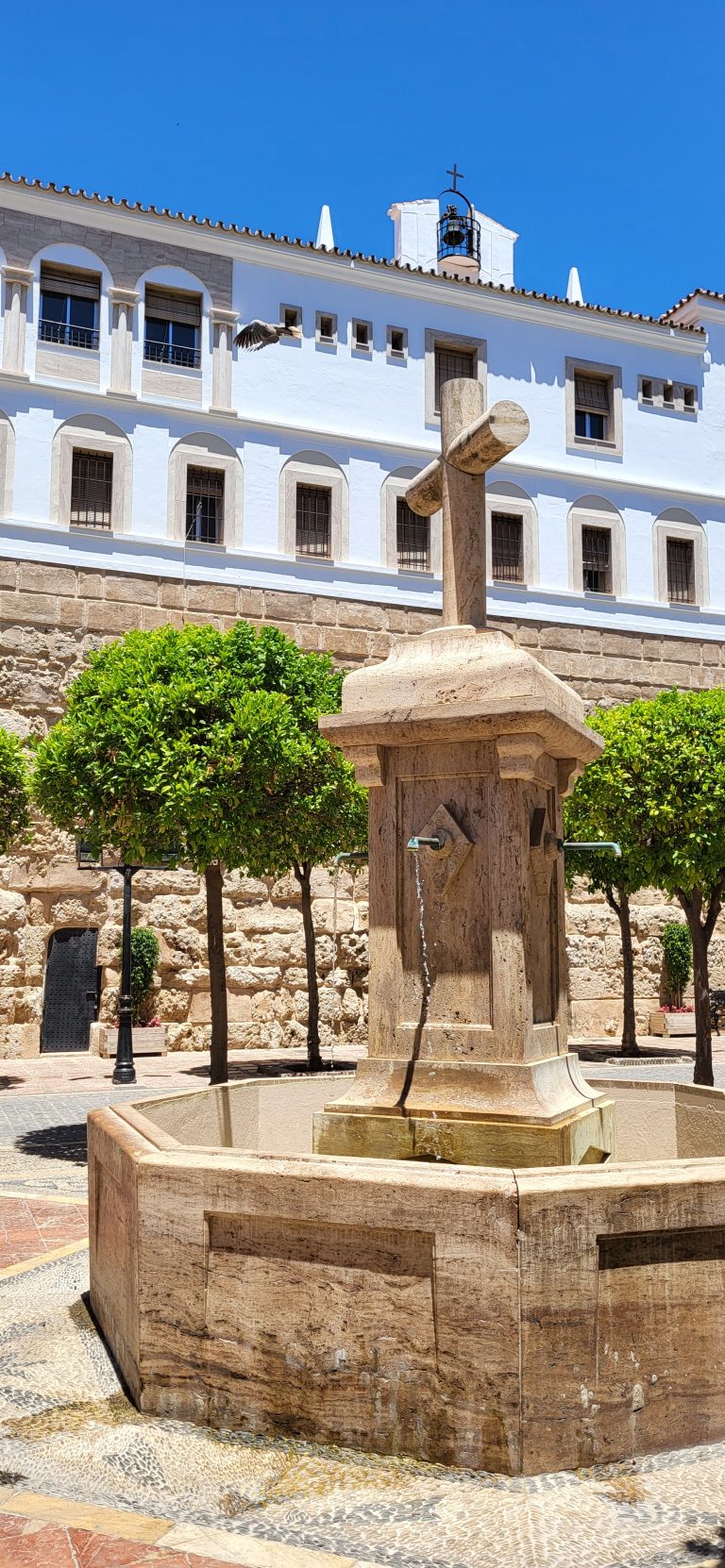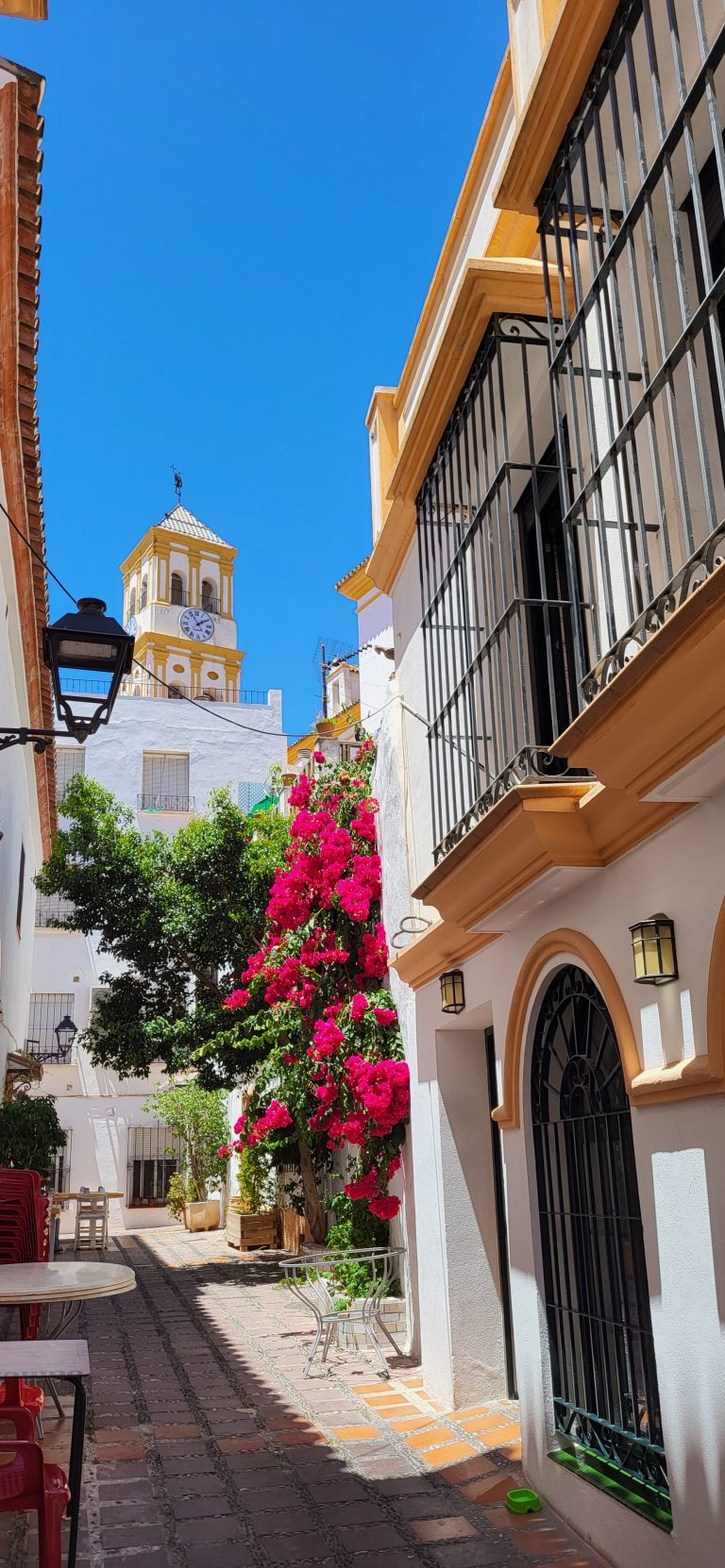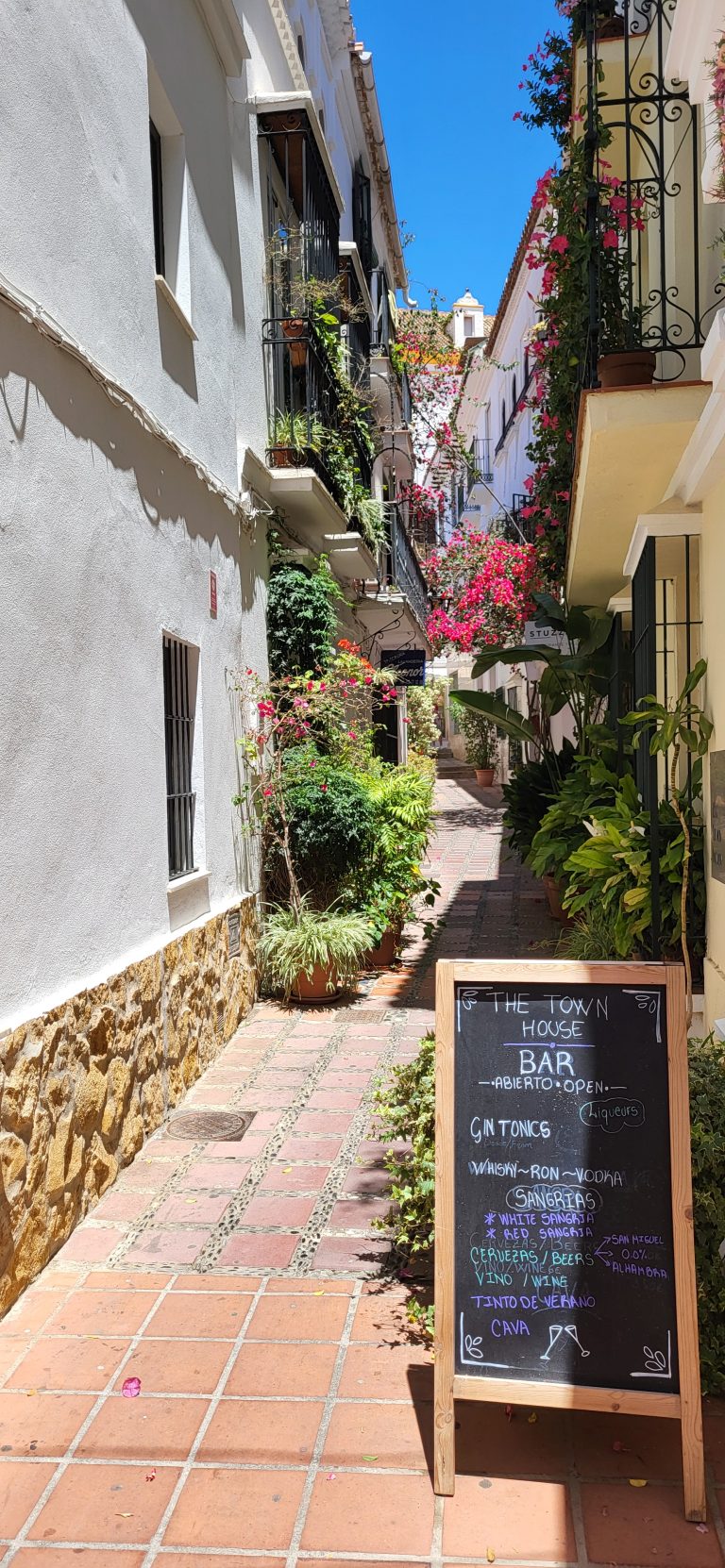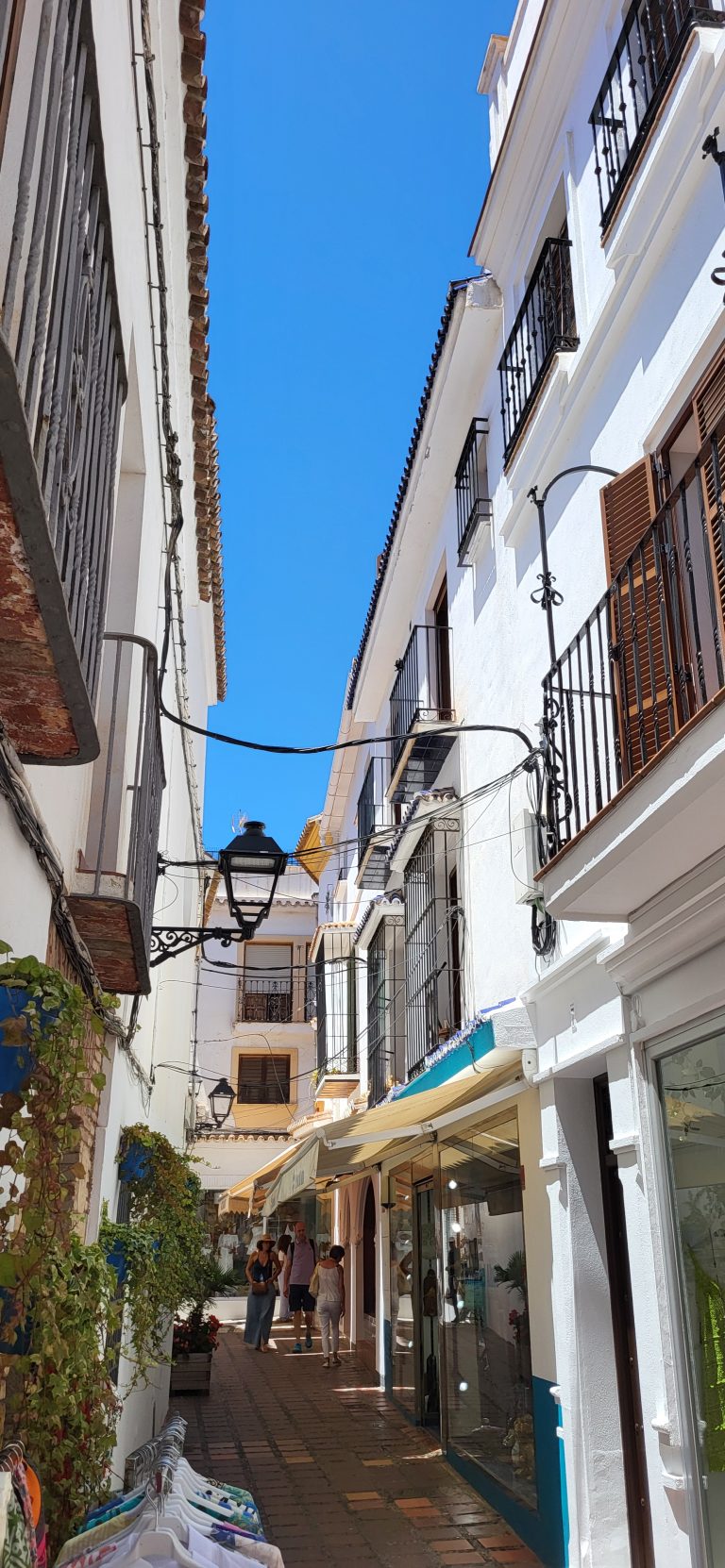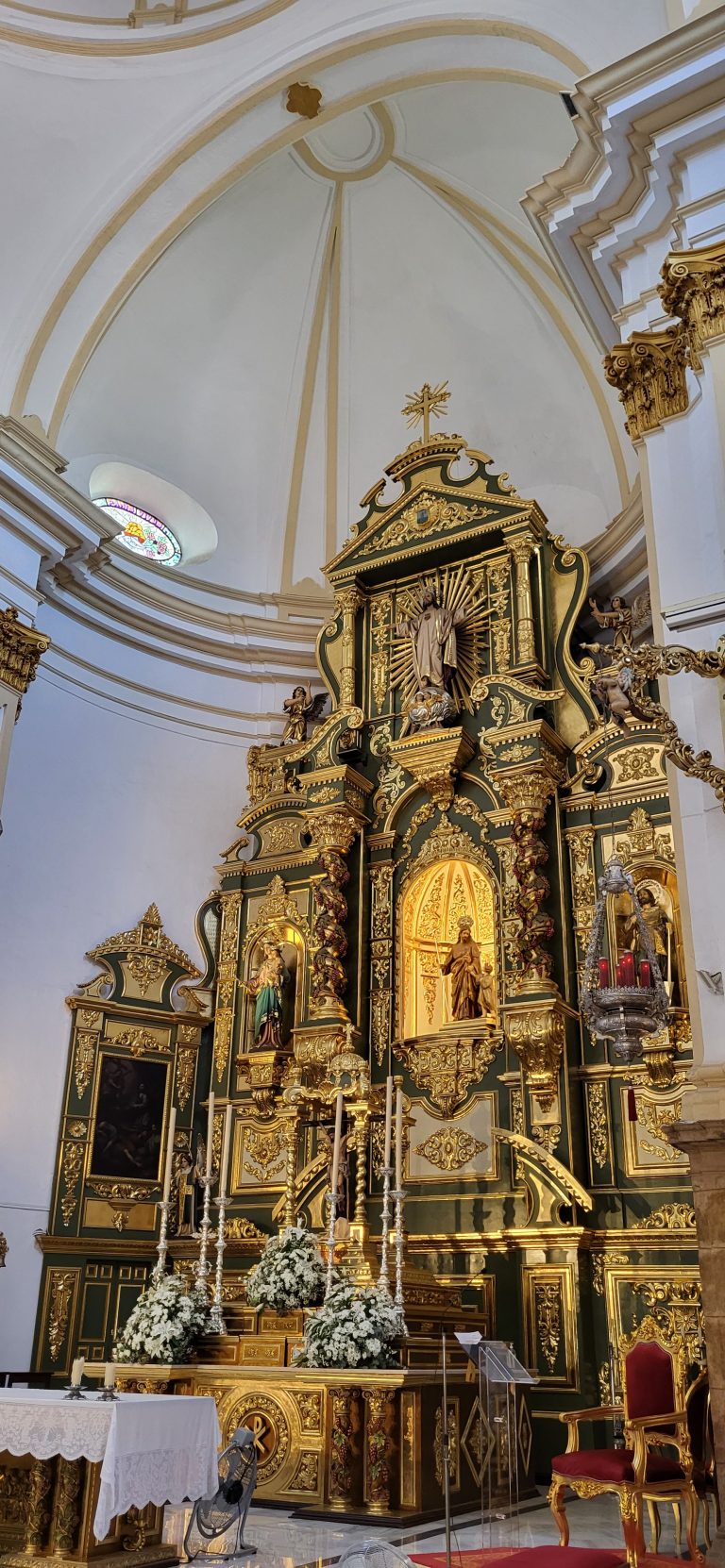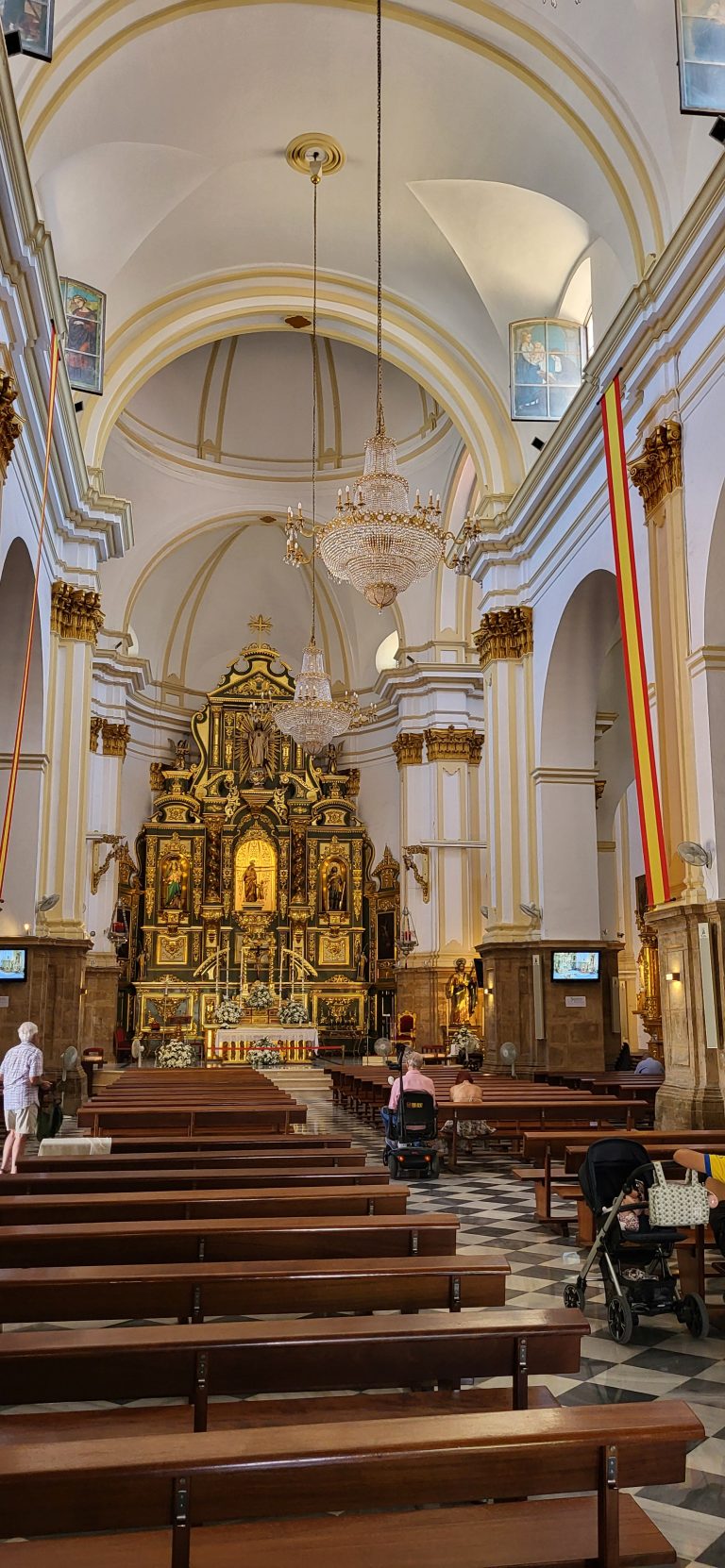The BASE
The village of Torremolinos, a few kilometers south of Málaga, provides a good base to explore the southern Andalusia region. It has good connections by car and also by the local rail service provider RENFE, which connects the city center to Fuengirola (southbound line C-1, including the airport) and Álora (northbound line C-2). If you don’t rent a car, it is a good alternative.
Marbella
The first time we hit the Spanish roads, the city of Marbella was our destination. With 150,000 inhabitants, it is much smaller than Málaga, but very popular. The town, well known to golf players due to the numerous golf clubs in the area, attracts visitors (including wealthy ones) with its great golf, gastronomy, beaches, shopping, and more. The relatively small size of the town keeps everything very compact and close.
Marbella old town
Parking for free can prove to be a challenge, but we managed to leave the car at a small car park next to the Parque de la Represa, which I considered to be pure luck. A short walk took us to the Old Town. In a relatively small area, you’ll find everything in one place. Little shops, gently squeezed within narrow streets, offer a selection of local crafts, and restaurants tempt you to stop and try something from the local cuisine. As I always try to go for local food, I could not resist the call. Firstly, however, we got engulfed by the atmosphere of the narrow streets leading us to a small square with the church of Iglesia de Nuestra Señora de la Encarnación, well worth a visit.
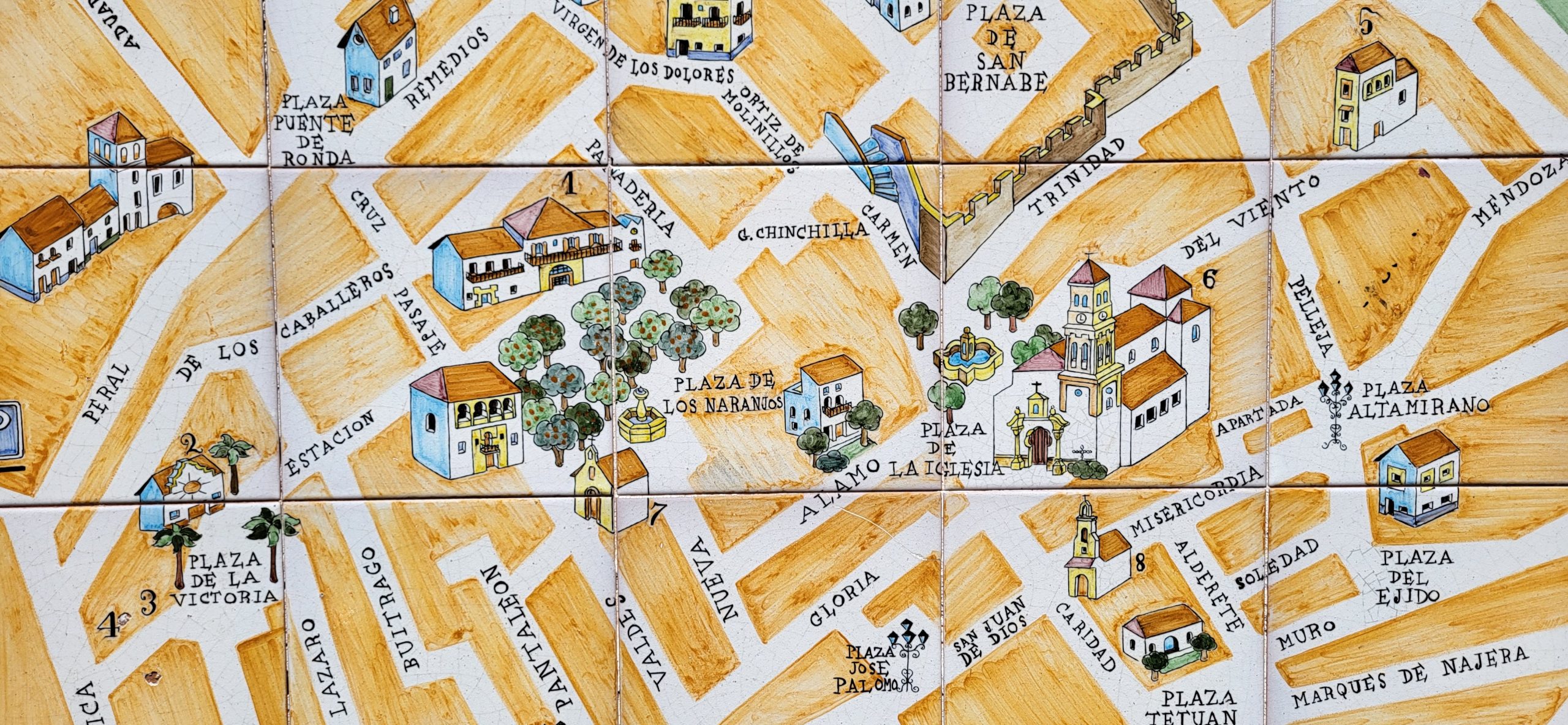
Marbella Old Town map, image credit: Juraj Hrabovsky, HUP
Just across the block sits the Plaza de los Naranjos, or the Orange Square, named not for its color but for the orange trees you can find there. Full of restaurants tempting you to take a seat and try their specialties, it offers a welcome resting place.
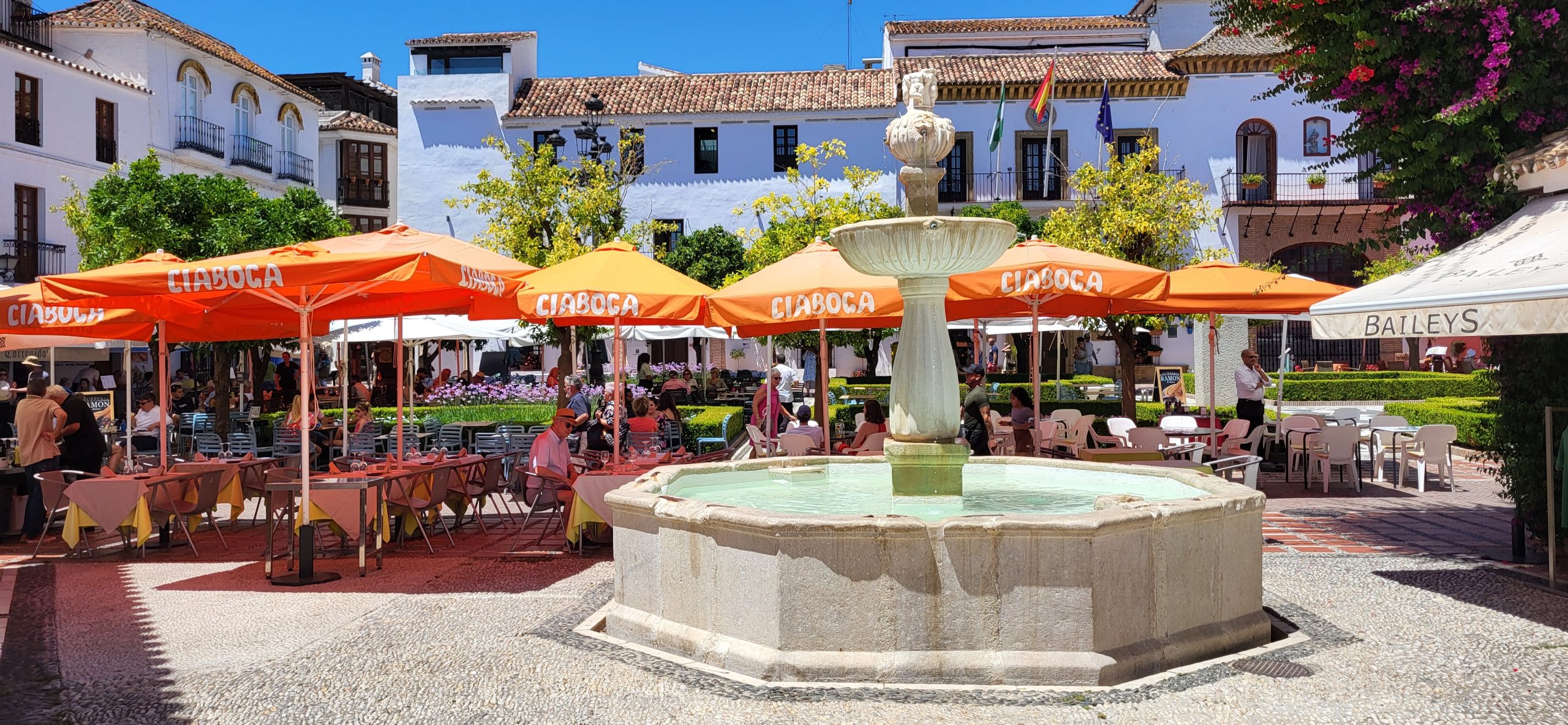
Plaza de los Naranjos, image credit: Juraj Hrabovsky, HUP
If you are interested in local produce, keep walking another two ‘blocks’ in the same direction, and you’ll reach the local marketplace—Mercado Municipal de Marbella—a great place to check out what the area has to offer. The choice is yours: taste it here or in one of the Old Town restaurants. When we asked a local guy in the old town shop where to eat, he strongly suggested trying the restaurants around the area rather than those right on the beachfront. As it was Monday, he considered it a good day to go for fish and seafood because fishing over the weekends is a bit quieter, if you know what I mean 
Lunch and beach
e pick up a place caled After a good lunch at Altamirano, a nice seafood place nested in small square, we walked down to the Playa de Venus beach. A busy place, with typical summer buzz. If you like less crowds, try some of the beaches outside the town, but during the season you might not find the place just for your own.
SUMMARY
Driving time: approx. 50 min (by A-7, avoiding toll road AP-7)
Distance: 45km (from Torremolinos)
Parking: Free, GPS 36.512750658051395, -4.884106016509298
Eating: Altamirano
Sites:
- Parque de la Represa,
- Iglesia de Nuestra Señora de la Encarnación,
- Plaza de los Naranjos,
- Mercado Municipal de Marbella,
- Playa de Venus
Gibraltar
Where Europe reaches to kiss its neighbor Africa lies Gibraltar. A piece of rock that seemingly does not belong there, it continues to fascinate. Historically a place of interest for many nations, it politically belongs to the UK and is classified as a UK overseas territory, currently not part of the EU. The advantage of controlling the Strait of Gibraltar is the control of the entrance to the Mediterranean from the Atlantic.
Crossing the Gibraltar border
After a 1 hour and 45 minute drive, we left the car on the Spanish side of the border in the town of La Línea de la Concepción, mainly due to practical reasons and the queue at the border control. Free parking is limited, and a day pass could set you back 16-20€ at a car park next to the border crossing. We ended up on the road next to the Playa del Castillo and took a short walk to the border crossing. From there, the shuttle included with our cable car tickets took us to the cable car station ‘for free.’
Once you cross the border, you find yourself in a different town and a different country. Everything is in UK style, including buses, traffic lights, and even the red telephone boxes. The only thing in line with the rest of Europe is the right-hand side driving (I guess due to practical reasons).
Airport crossing
I had hoped to cross the famous airport runway, as Gibraltar Airport is one of the few, if not the only, airports where a public road crosses the runway. Unfortunately, cars and buses are no longer allowed to use it. They are diverted to the underpass at the end of the airport. If you want the experience, you can do so on foot or by bicycle.
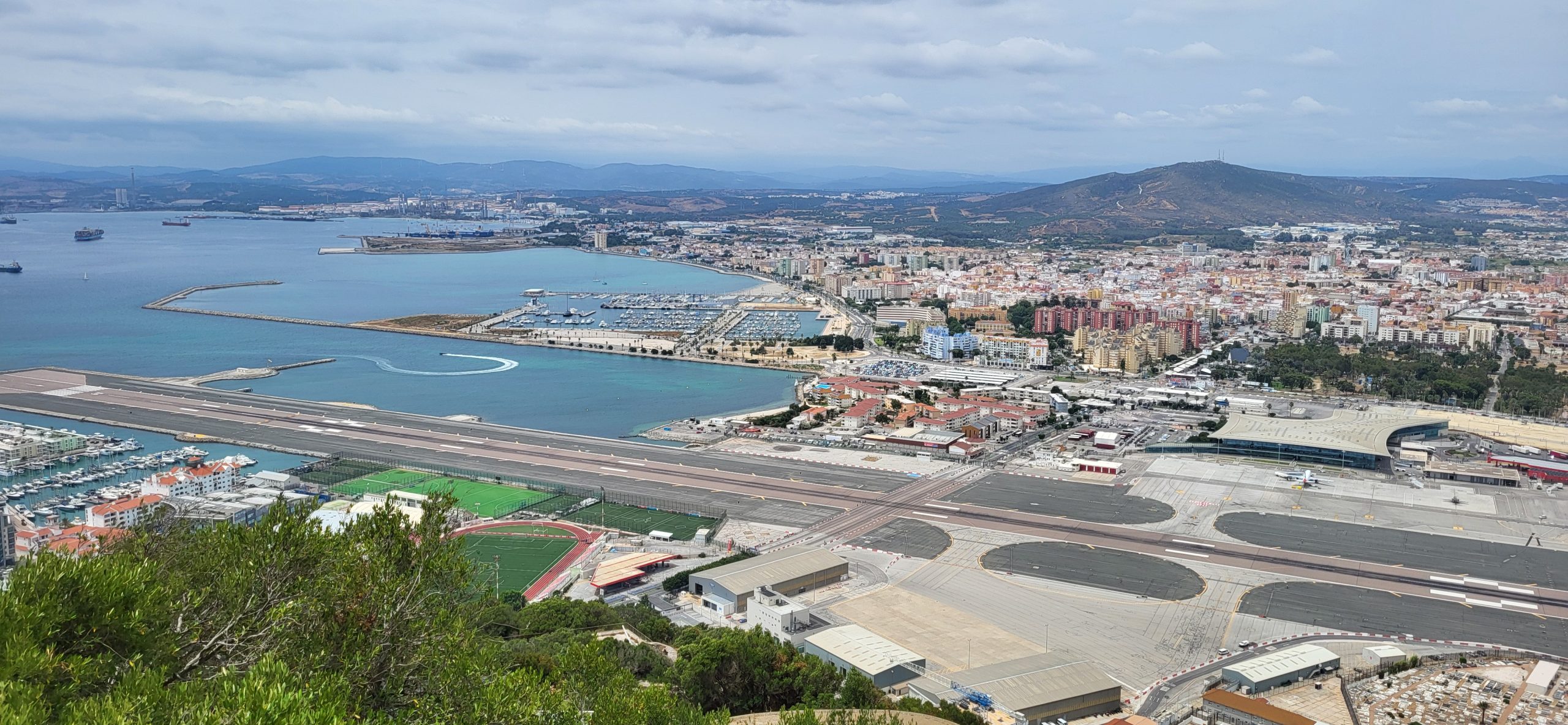
Gibraltar airport, image credit: Juraj Hrabovsky, HUP
The Rock
We opted for the cable car to save us time and effort as we planned to walk the Rock. A 6-minute ride takes you from the bottom station to an altitude of 412 meters, offering great views of the Bay of Gibraltar. Everyone stands during the ride, so do not expect cozy seating. At the top, there’s a restaurant where we had a proper English fish and chips lunch—being in the UK, no other option “was allowed”.
Exploring Nature Reserve
Once you buy the pass to the Nature Reserve (it was included in our cable car tickets), it grants you access to all attractions on and inside the Rock. First, we took a walk to the Gibraltar viewing platform, just off the restaurant, where you have great views (as from almost everywhere) towards the Bay of Gibraltar, the port, and the Spanish towns around the bay, including Algeciras. On the way to the Skywalk Gibraltar, another viewing platform with a glass floor, you pass the Barbary macaque feeding station. Gibraltar is the only place in Europe with a population of ‘wild’ apes, which you encounter around the Rock. Beware of feeding them, as it may result in a hefty fine of 4000€. The feeding station is where the apes get fed, not where you are allowed to feed them!
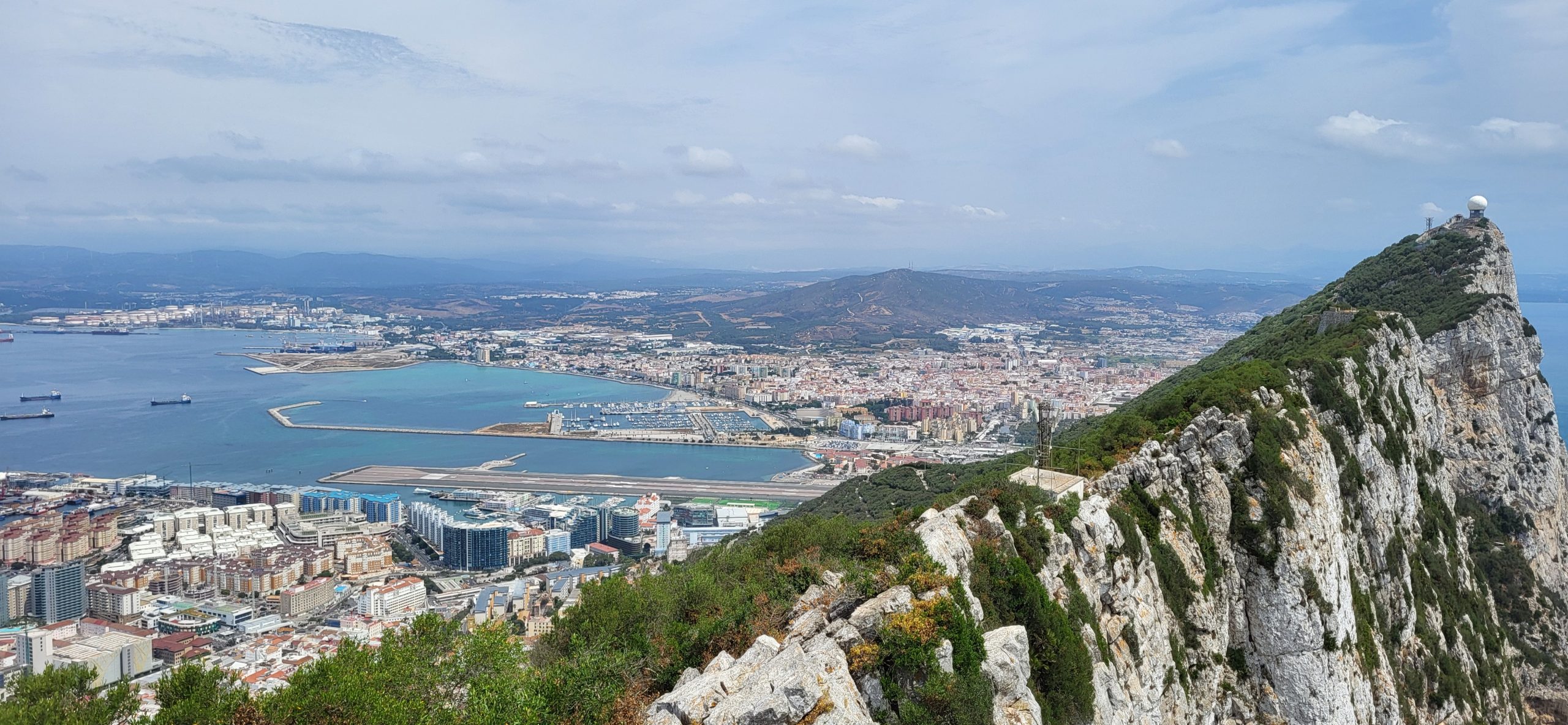
A view from Gibraltar viewing platform, image credit: Juraj Hrabovsky, HUP
Taking the uphill route via Douglas Lookout will take you to O’Hara’s Battery, where you get a glimpse of Gibraltar’s former defense system. Due to the nature of the landscape, Gibraltar was easy to defend. The heights of the Rock provided safe battery emplacement positions. Because of the lack of natural features around the Rock, enemies nearby were easy to fire on, with no means of cover and defense. Do not miss Saint Michael’s Cave on the way back. The light show inside the cave is quite impressive.
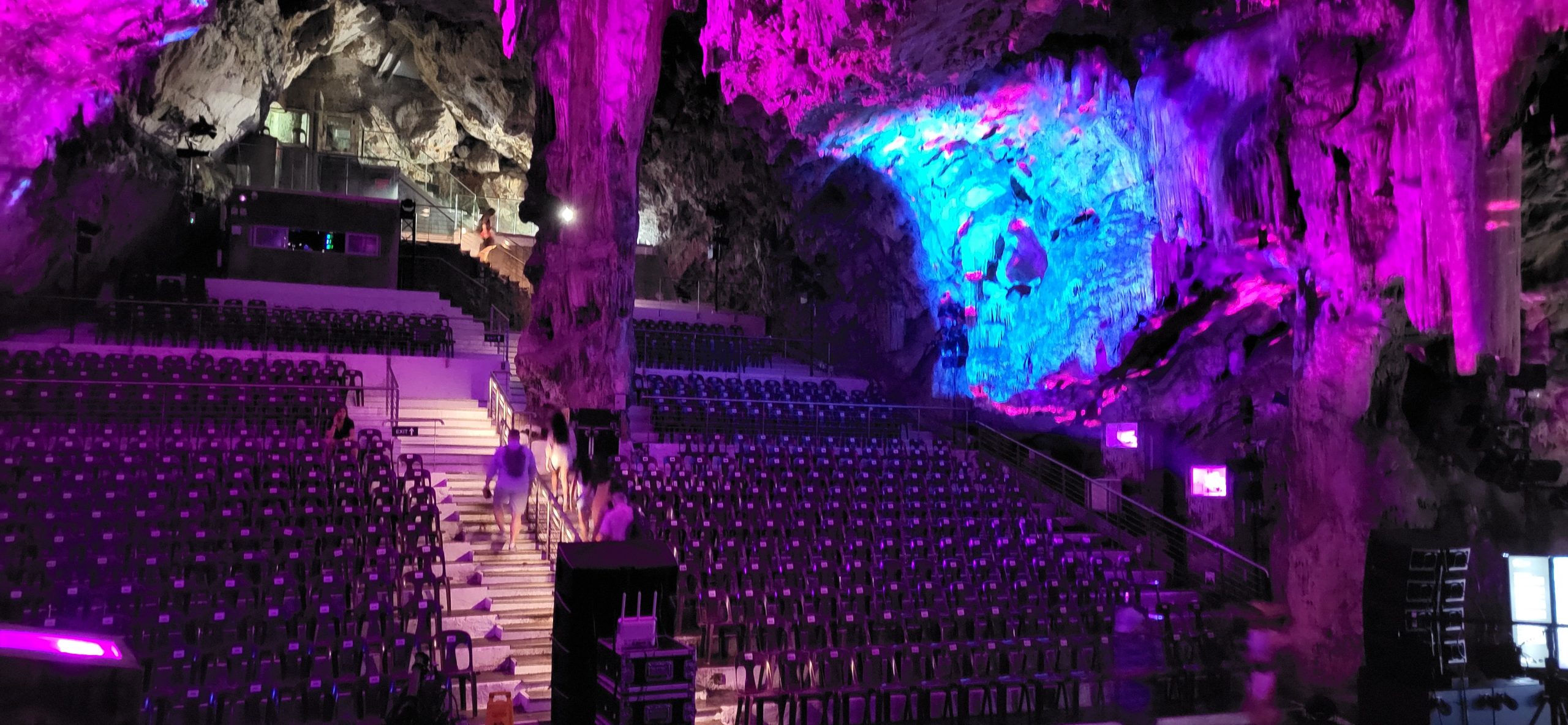
Saint Michael’s Cave, image credit: Juraj Hrabovsky, HUP
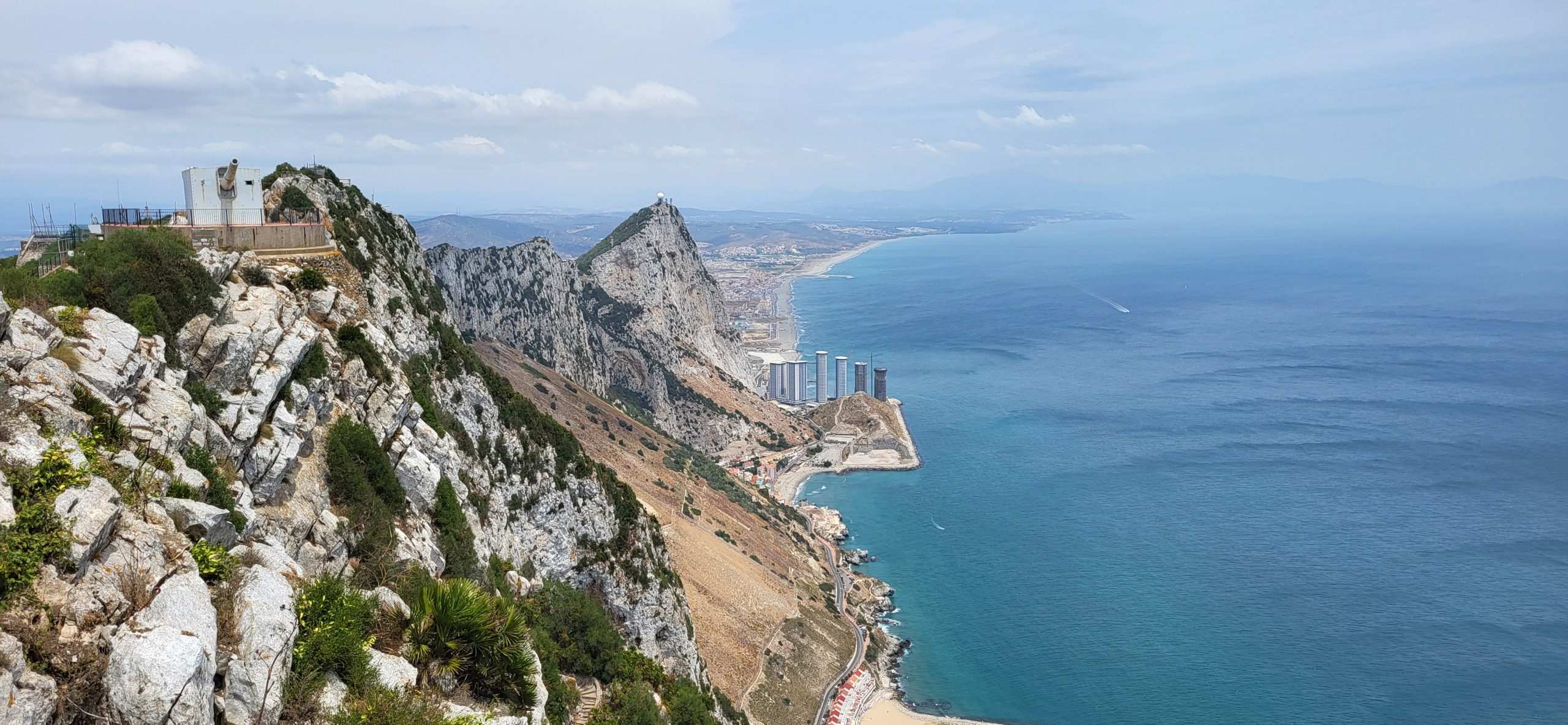
O’Hara’s Battery, image credit: Juraj Hrabovsky, HUP
Defending Gibraltar
A 45-minute walk takes you all the way across the Rock to the part overlooking the airport, where you find another formidable part of the defense system – the Great Siege Tunnels. As Gibraltar faced many attempts to seize control over it, its defenses evolved from the Middle Ages up to the Second World War. The tunnels offer a look into history, showing the conditions defenders had to endure and describing the work of early and modern engineers who proposed, designed, and tunneled through the limestone rock, creating a network of tunnels and halls used as a perfect shelter and fortress in times of need. So many remarkable stories in time are squeezed into such a small place.
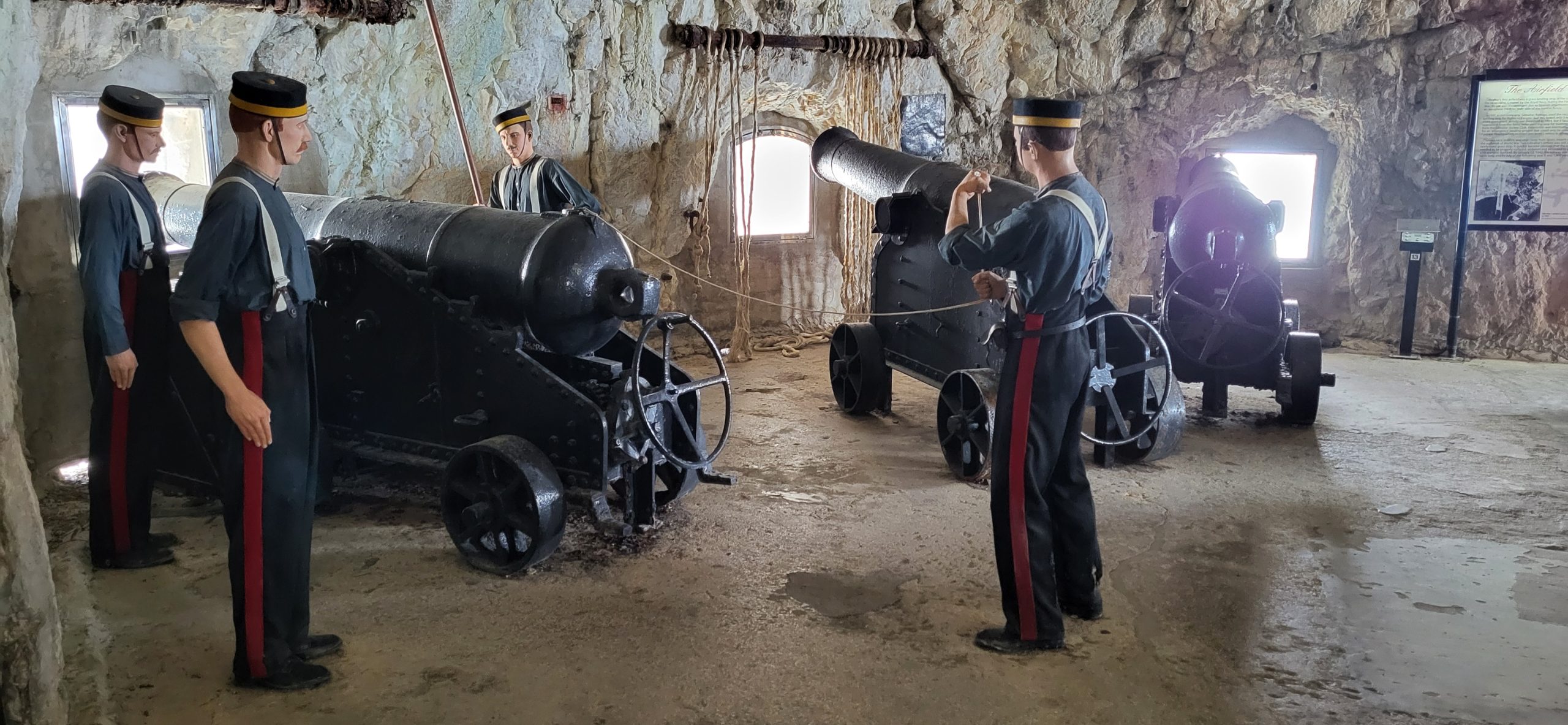
Great Siege tunnels, image credit: Juraj Hrabovsky, HUP
Once out of the tunnels, the airport lies right in front of you. We were lucky to see a British Airways flight take off. Watching from above and seeing the whole length of the runway, I couldn’t resist the feeling that the plane would never make it, as the interpretation of speed is very different. It obviously did in the end.Another downhill walk led us back to the cable car station, where we took a bus back to the border crossing. Although we managed to see a lot during the time we had, there is much more to see and do. We did not spend any time exploring the town itself.
SUMMARY
Driving time: approx. 1:45 hours (by A-7, avoiding toll road AP-7)
Distance: 117 km (from Torremolinos)
Parking: Free, GPS 36.160633705339905, -5.339335571657673
Eating: Cable Car Top Station Restaurant and Cafe
Sites:
- Airport runway crossing
- Gibraltar viewing platform
- Skywalk Gibraltar
- Douglas Lookout
- O’Hara’s battery
- Saint Michael’s cave
- Great Siege Tunnels
More places to visit:
South:
- Mediterranean Steps
- Europa Point lighthouse
- Harding’s Battery
- Fahd Bin Abdulaziz Al Saud mosque
West
- 100 Ton Gun Napier of Magdala Battery
- Ape’s Den
- Windsor Suspension Bridge
- City under Siege exhibition
- Moorish Castle

